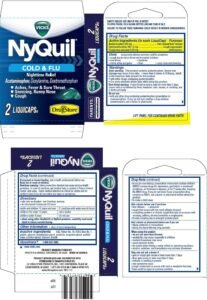Paraffin Wax Treatment_ What’s Safe and Possibly Unsafe_
Paraffin Wax Treatment: Safe Uses and Potential Risks
Introduction to Paraffin Wax Treatment
Paraffin wax is a soft, low-melting point wax commonly used in beauty, therapeutic, and commercial applications. It is frequently employed in treatments to reduce stiffness and alleviate pain in the hands and feet. While paraffin wax is derived from petroleum and generally considered safe, it’s essential to understand its various uses and potential safety concerns. In this guide, we’ll explore the benefits, uses, and safety precautions for paraffin wax treatments.
Versatile Uses of Paraffin Wax
Paraffin wax is known for its versatility across various fields. Its uses span from personal care to industrial applications. Here’s a breakdown of how it can be utilized:
-
Beauty Treatments: In salons, paraffin wax is commonly used for dipping hands and feet to moisturize and reduce joint stiffness.
-
Industrial Applications: Paraffin wax is a key ingredient in products like candles, wax paper, and polishes. It also serves in waterproofing, rust prevention, and as a base for various ointments.
-
Artificial Paraffin Wax: Artificial paraffin wax, tougher than its natural counterpart, is utilized in industrial processes such as floor finishes, leather tanning, and paper preservation.
Therapeutic Benefits of Paraffin Wax
One of the most popular uses of paraffin wax is in therapeutic treatments for hands and feet. The heat from melted wax helps to soothe muscle stiffness and improve blood circulation. Studies, such as one published in 2020, show that paraffin wax treatments can reduce tendon and muscle stiffness, enhance joint mobility, and alleviate symptoms of arthritis. Paraffin wax is particularly effective for individuals experiencing:
-
Muscle and Tendon Stiffness: Paraffin wax treatments help to relax tight muscles and tendons.
-
Arthritis Relief: The warmth of paraffin wax can significantly reduce pain and swelling in the joints.
Moisturizing Effects of Paraffin Wax
Paraffin wax also serves as an occlusive moisturizer. When applied to the skin, it creates a barrier that prevents moisture loss, allowing deep hydration. This property makes it particularly effective for those with dry or cracked skin, as it locks in moisture and promotes softness.
Commercial Uses of Paraffin Wax
Beyond personal care, paraffin wax has many commercial applications:
-
Cosmetics: It’s used in cosmetics as a binding agent and base for lotions.
-
Food Preservation: Paraffin wax is used in food packaging to seal products and extend shelf life.
-
Crafts and Industry: It is integral in manufacturing candles, waxed paper, and even electric insulators.
Paraffin Wax Safety: What to Know
While generally considered safe, there are certain precautions to take when using paraffin wax. It’s essential to:
-
Temperature Safety: Ensure the wax is not too hot before use. The recommended temperature for dipping is around 125°F. Always test the wax before applying it to the skin to avoid burns.
-
Avoid Use on Broken Skin: Paraffin wax should not be used on open sores, cuts, or areas of numbness.
-
Flammability: Paraffin wax fumes, though odorless, can be flammable. Inhaling these fumes may cause respiratory issues, nausea, or discomfort. Always ensure adequate ventilation when using paraffin wax.
At-Home Paraffin Wax Treatment
Paraffin wax treatments can be easily done at home. Here’s how to safely apply paraffin wax to your hands:
-
Preparation: Start by cleaning and thoroughly drying your hands.
-
Moisturization: Apply a thin layer of lotion to your hands to enhance the moisturizing effect.
-
Dipping: Slowly dip one hand into the melted wax, ensuring you keep your fingers apart.
-
Repeat Dipping: Remove your hand and dip it again, repeating this process 6–8 times to form a thick layer.
-
Wrap and Relax: After dipping, cover your hand with a plastic bag and wrap it with a towel. Let it sit for 10–15 minutes for optimal results.
-
Remove the Wax: Gently peel off the wax and enjoy the soft, moisturized skin.
Where Does Paraffin Wax Come From?
Paraffin wax is derived from petroleum and was first commercially produced in 1867. Over the years, it has been refined to allow for various industrial uses. Today, paraffin wax is available in stores and online, with many products containing additional additives for enhanced performance. When purchasing paraffin wax, always check the ingredients to ensure you’re getting the right product for your needs.
Conclusion: Is Paraffin Wax Safe?
Paraffin wax is widely regarded as a safe and effective treatment for alleviating pain, stiffness, and dryness. Whether used in professional settings or at home, paraffin wax can offer therapeutic benefits for those with arthritis or muscle stiffness. When used correctly and with the proper precautions, paraffin wax is a great way to improve comfort and skin health.
FAQ
What is Artificial Paraffin Wax?
Artificial paraffin wax is a harder, synthetic version of natural paraffin. It has various industrial applications, including in floor finishes and as a waterproofing agent.
Is Paraffin Wax Safe to Use?
Paraffin wax is safe for most individuals when used correctly. Avoid using it on broken skin, and always test the temperature before applying it to prevent burns.
Expert Tips
-
Incorporate seasonal or trendy variations in your paraffin treatments for added relaxation and benefits.
-
Consider using paraffin wax for both beauty and therapeutic purposes to make the most of its moisturizing and pain-relieving properties.
Key Takeaways
-
Paraffin wax is a versatile product with uses in both beauty treatments and industrial applications.
-
It is an excellent choice for relieving pain, stiffness, and dry skin.
-
Always take safety precautions, especially regarding temperature and skin condition, to avoid burns or irritation.
Join Our Community
For more wellness and beauty tips, subscribe to our newsletter for regular updates!








